Can dogs eat bones? Some types of bones are a hard NO when it comes to treating your dogs but others can be an occasional healthy treat. We are covering all the basics from raw vs. cooked bones to plant-based bone and chew alternatives, and even a simple dog-friendly bone broth recipe!
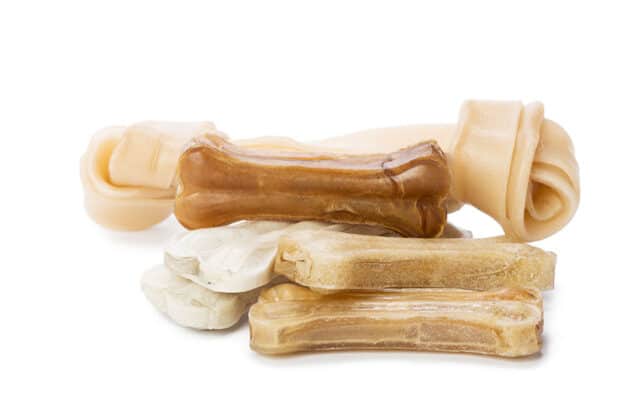
***Please note, I am not a veterinarian, just a very passionate dog owner! The information in this blog post documents our own personal experiences, research, and the recipes that we feed our dogs under our veterinarian’s careful supervision. Please, consult with your vet and use your own personal judgment when considering transitioning to a 100% human grade food diet for your pup.***

Can dogs eat bones?
Chewing is a healthy and natural behavior for dogs. Almost all puppies chew to get a better understanding of their new surroundings.
Adult dogs engage in the same action, but instead of exploring, they chew as entertainment and therapy, as it can relieve uneasiness and anxiety.
While chewing is great for dogs, never leave your dog alone with a bone for an extended period of time. They are just as capable of choking as we are!
When your dog eats any animals bones keep an eye out for these signs of infection or complications and immediately notify your vet if they occur:
- Fatigue
- Dental issues
- Vomiting
- Bloody stool
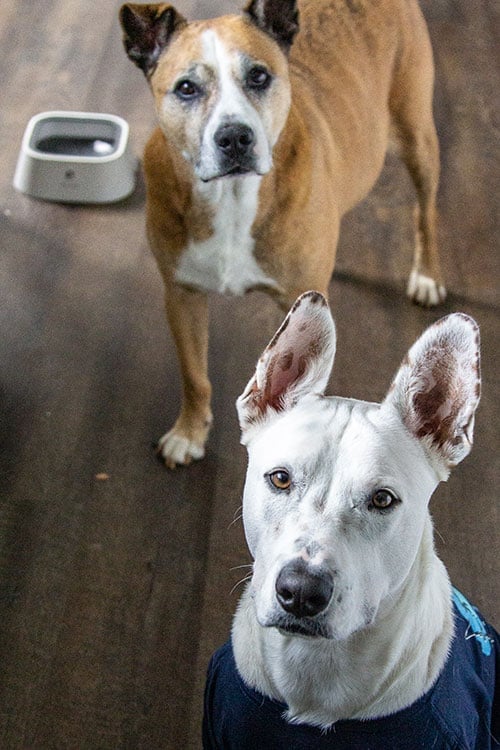
Raw VS Cooked Animal Bones. Are bones safe for dogs?
First and foremost, you should NEVER give your dog cooked bones of any kind!
They fracture into shards, which can cause choking and significant harm to the dog's mouth, throat, and intestines. By cooking the bones, it can deplete the nutrients in the bone.
Raw bones are generally less dangerous than cooked bones but can still harm your pup. Avoid giving your dogs any of the following bones:
- Rib bones of any kind are smaller than others and prone to breaking or becoming lodged in your dog's throat.
- Pork bones are prone to splintering and cracking.
- Poultry bones are tiny and can easily break and splinter
If your dog consumes cooked bones, contact your veterinarian immediately for advice or an appointment to rule out any significant consequences.
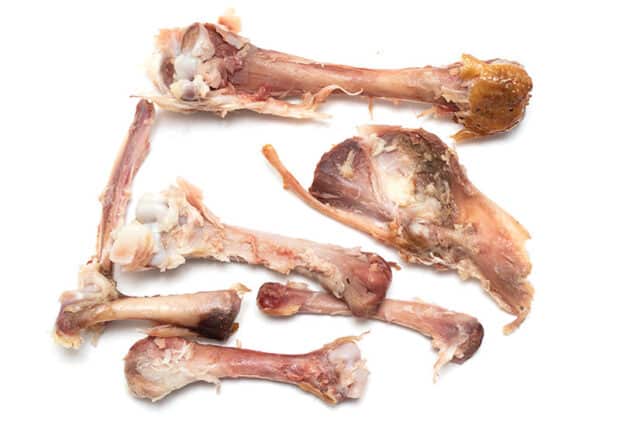
Poultry Bones
No - never feed your dog's poultry bones. Poultry bones appeal to dogs because they are thin, chewy, and usually still covered in meat. Still, they are dangerous, and you should avoid giving them to your dog.
Cooked poultry bones can break and splinter, causing your dog to choke, puncture their gastrointestinal tract, as well as become stuck in their throat. If any of these problems were to occur, it could result in death.
Chicken, turkey, duck, and geese bones should all be avoided and never fed to your dog.
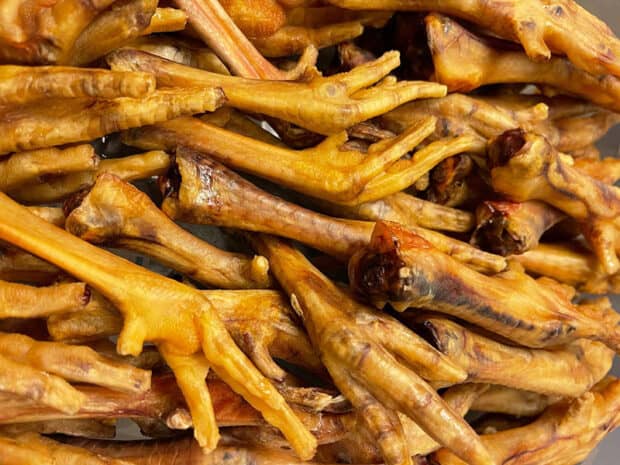
Chicken Feet Dog Treats
A healthy chicken treat that your dog can consume is chicken feet! The bones in chicken feet are tiny and fully digestible for dogs. If you are concerned that the nails are too sharp you can clip them off before feeding.
Chicken feet are a healthy treat that offers a natural source of glucosamine and chondroitin that help maintain your dog’s joint health. And they act as edible toothbrushes that keep your pup’s teeth nice and clean.
Whereas raw or dehydrated chicken feet are fine, you should never give your dog cooked, boiled, or fried chicken feet. At high temperatures, chicken bones can get hardened and could splinter, which causes serious injuries to your dog.
Beef Bones (cow)
No, never feed your dog beef bones! Cooked beef bones can split and cause significant internal injuries to dogs. Beef bones, as well as any other cooked bones, are strictly prohibited.
Even though a dog's strong stomach acid helps break down bones and eliminate bacteria, raw bones can be dangerous, and they need to eat cautiously. While some people feel that beef bones are beneficial for dogs, in our opinion, the risk isn't worth it.
Pork Bones (pig)
No, never feed your dog pork bones! When your dog chews on pork bones, whether raw or cooked, they are prone to splinter and break. Small chunks of pork bone may be swallowed by your dog, causing choking, intestinal obstructions, or harm to the esophagus or intestines.
Pork rib bones also contain a lot of fat. Dogs aren’t equipped to digest this much-saturated fat and may get pancreatitis as a result.
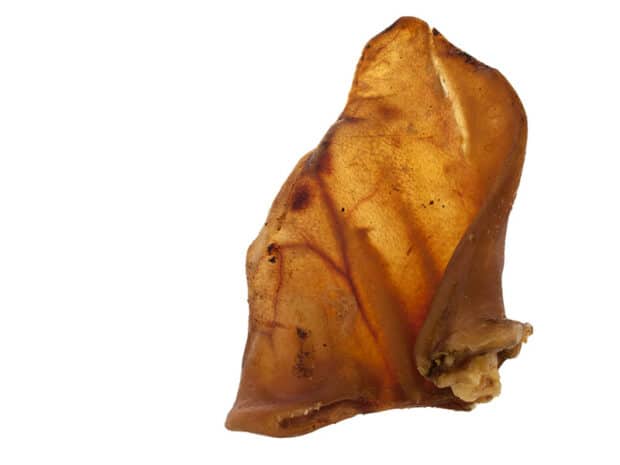
Are Pig Ears Safe Bone Alternatives for Dogs To Eat?
While pig ears are deemed safe for dogs it would be best if you did not offer them at all.
Pig ears contain a lot of fat, which can lead to obesity. Some dogs may experience stomach pain as a result of eating them also. They can irritate the pancreas, producing pancreatitis in sensitive dogs due to their high-fat content. If your dog shows signs of vomiting, drowsiness, abdominal pain, and diarrhea after ingesting contact your veterinarian.
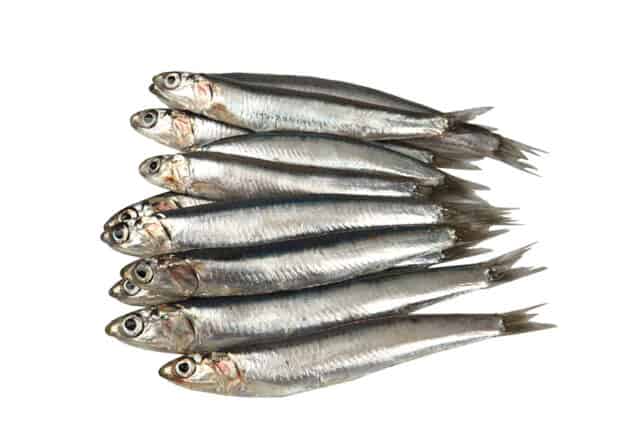
Fish Bones
Yes and no. When it comes to fish - you really need to be careful. The bones are actually the most dangerous part of feeding fish to dogs.
The bones of fish are tiny, fragile, and potentially deadly. They can get caught in your dog's mouth, esophagus, stomach, and intestines, potentially puncturing the organ wall in some cases.
The only type of fish that contains bones you should ever feed your dog are bite-sized sardines.
Fresh and whole sardines are ideal if you can find them and want to give your dog something to chew on for a few minutes. However, if the sardine is on the larger side you will have to remove the backbone before treating your dog.
Canned boneless sardines in water are a good choice for treating as well, avoid sardines that are flavored or packed in oil. Again, if your tinned sardines are not boneless you may have to remove the backbone before offering them to your dog.
Adding chopped-up sardines or the water from a can of sardines to your dog's dinner is a great way to add both moisture and nutrition.
How many sardines are the right amount to feed your dog? Well, it varies. The website Home Alive Pet has a weight-based sardine treating chart which is linked here. It starts with dogs that are less than 5 pounds which only need 2 sardines at a time or ¼ of a can. And goes all the way to dogs that are over 51 pounds which can eat upwards of 15 sardines in one sitting or 1 ¾ of a can.
Lamb Bones
Dogs can eat lamb bones, but they must be large enough not to fit entirely into their mouths.
Raw meaty bones, such as lamb flaps ( the breast of the lamb), can help maintain your dog's teeth, keep their gums healthy, and provide additional nourishment and cleansing of the digestive tract.
Deer Antlers
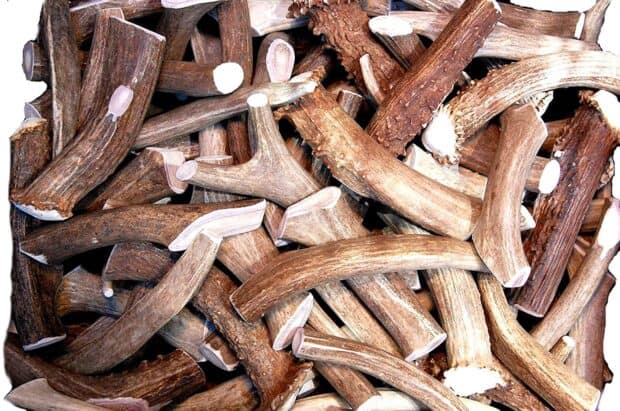
Can dogs eat deer antlers?
Yes! Antlers are harmless, and dogs can chew on them safely! Antlers from deer are safer for dogs than rawhide since they do not easily break and are all-natural. Compared to other dog chews, antlers are also a very long-lasting reward.
Deer Bones
Deer bones are an excellent way to add to your dog's diet. Dogs in moderation can consume raw deer bones. Deer bones can be used as a natural toothbrush when left uncooked. It keeps dogs' teeth clean and gums healthy by removing plaque build-up.
When you give your dog a deer bone to chew on, it's essential to keep an eye on them while they eat it.
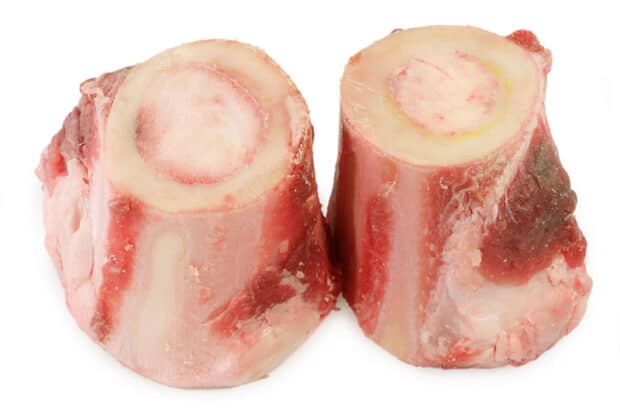
Bone Marrow
Fatty foods, such as bone marrow should be eaten in moderation, especially by dogs with health issues. As long as the marrow is separate from cooked bones, cooked bone marrow can be eaten in addition to a meal or as a special treat.
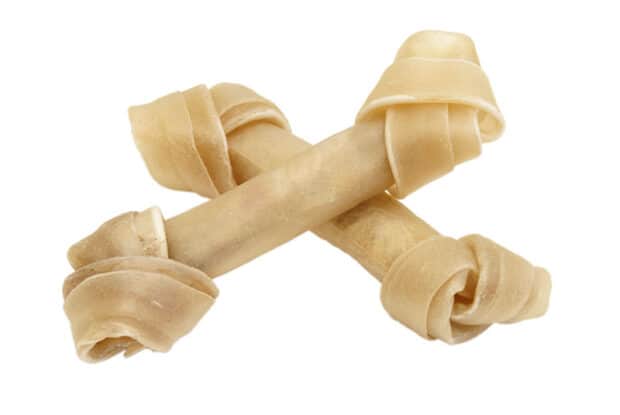
Are Rawhide Bones Safe for Dogs To Eat?
Rawhide carries more risks than benefits, so dog owners should avoid them and seek alternate pet treats or natural chews. Rawhide bones can induce choking and obstruction. In reality, that is a much more significant concern than contamination or an upset stomach. Rawhide can get caught in the esophagus or other regions of the digestive tract if your dog swallows large pieces of it.
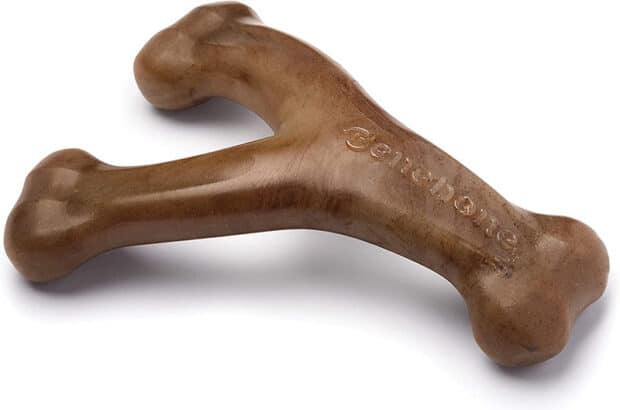
Are Nyalbones Safe for Dogs To Chew?
It's a hard no for us and even the manufacturers! Nylabones "non-edible chew products are made with plastic, rubber, or nylon. They are NOT intended for consumption" Nylabone® Non-Edible Chew
Nylabones, are made of plastic. They create a massive risk to your dog if swallowed. But, if you insist on providing these for your dog there are a few rules you can keep in mind that will ensure they're no more dangerous for your dog to chew on than any other chew toy.
- Nylabones come in various sizes, so make sure you get the right one for your dog.
- When the knuckle ends wear down or the bone becomes too small to chew correctly, you should replace your dog's Nylabone.
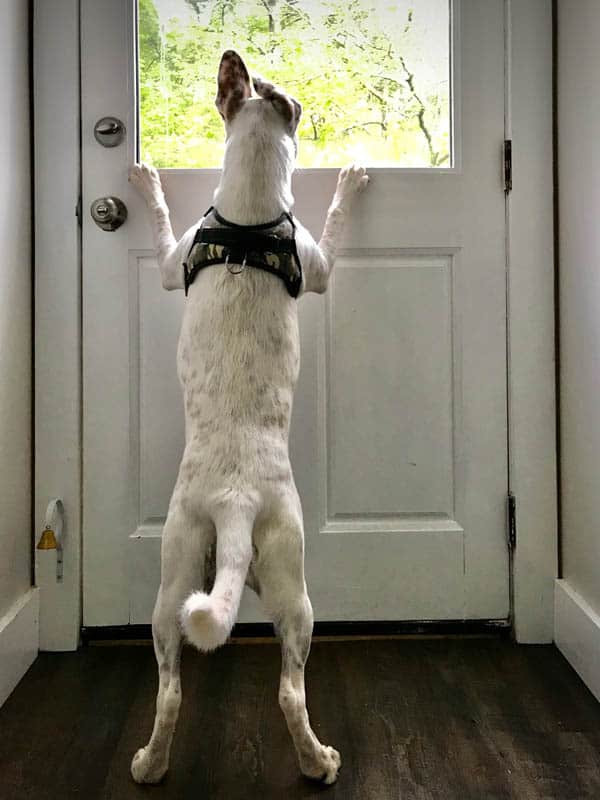
Natural Chews, Rawhide, and Other Bone Alternatives
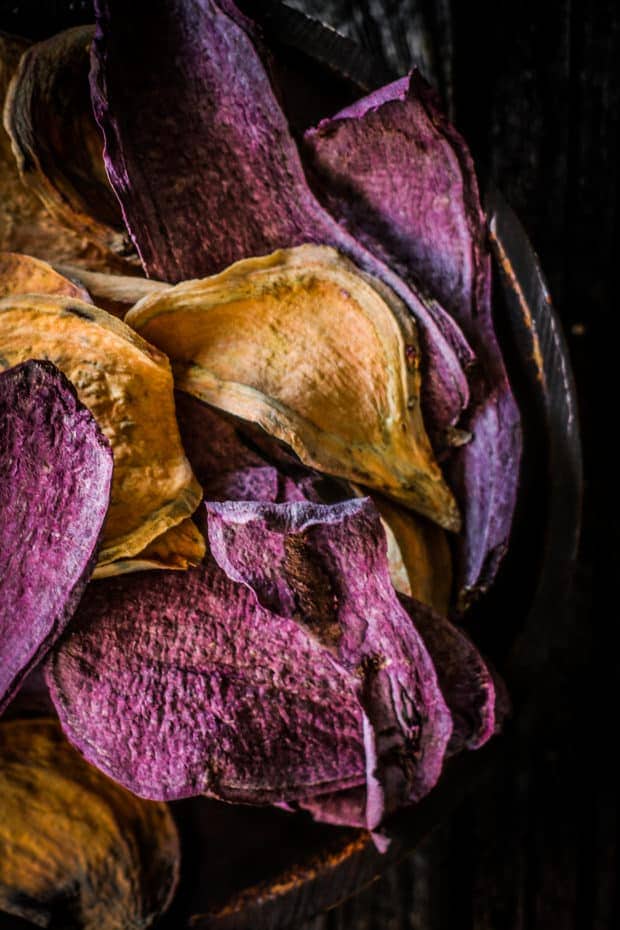
Dehydrated Sweet Potato Dog Chews recipe
Can Dogs Eat Sweet Potatoes? The resounding answer is YES! This 1-ingredient dog treat recipe is great for your dog and will save you lots of money by making them at home!
Sweet Potato Chews
Among vegetables, sweet potatoes are one of the top providers of fiber. Fiber is beneficial to your dog's digestive system. It will aid in regular, healthy bowel movements, and can help in relieving digestive problems.
A few other great benefits of sweet potatoes are:
- Promoting a healthy gut microbiome.
- They are high in potassium.
- Support healthy vision.
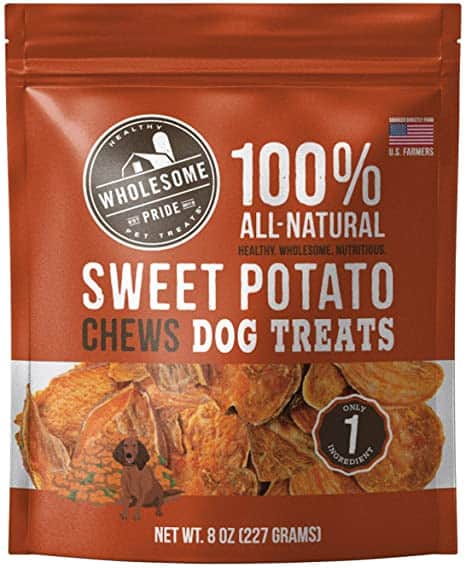
Sweet Potato Chews
If you don't have time, the desire, or the necessary equipment to make sweet potato chews at home. You can always stock up on these from Wholesome Pride.
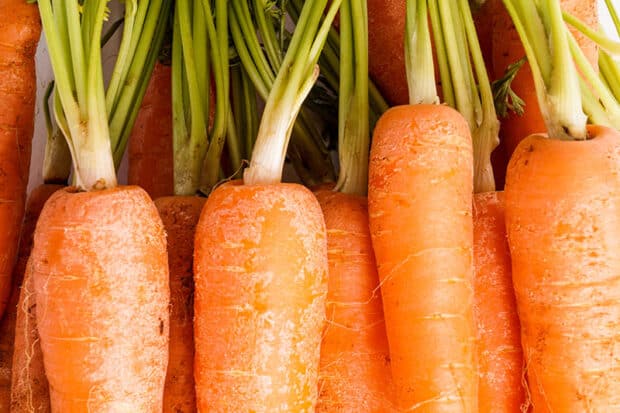
Whole carrots
Carrots are full of Vitamin A, which is good for their eyes, immune system, skin, and coat. Giving your dogs whole carrot "bones" is as easy as washing them and topping them!
To increase the crunch factor and prolong chewing time, freeze-prepped whole carrots before treating your dog.
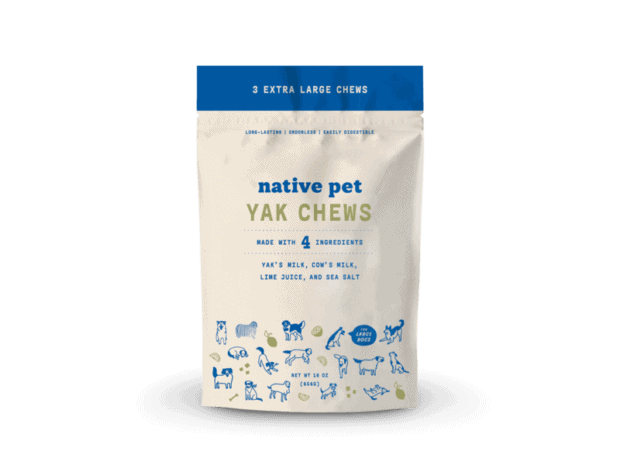
Can dogs eat Yak Chews?
Yes! These 4-ingredient treats from Native Pet are all-natural, high-protein hard cheese chews made of yak’s milk.
They are stink and mess-free, easily digestible, splinter-free, and last a long time. Plus, these chews offer an extra protein boost for your dog.
Use code "THISMESSISOURS20" at checkout for 20% off your order!
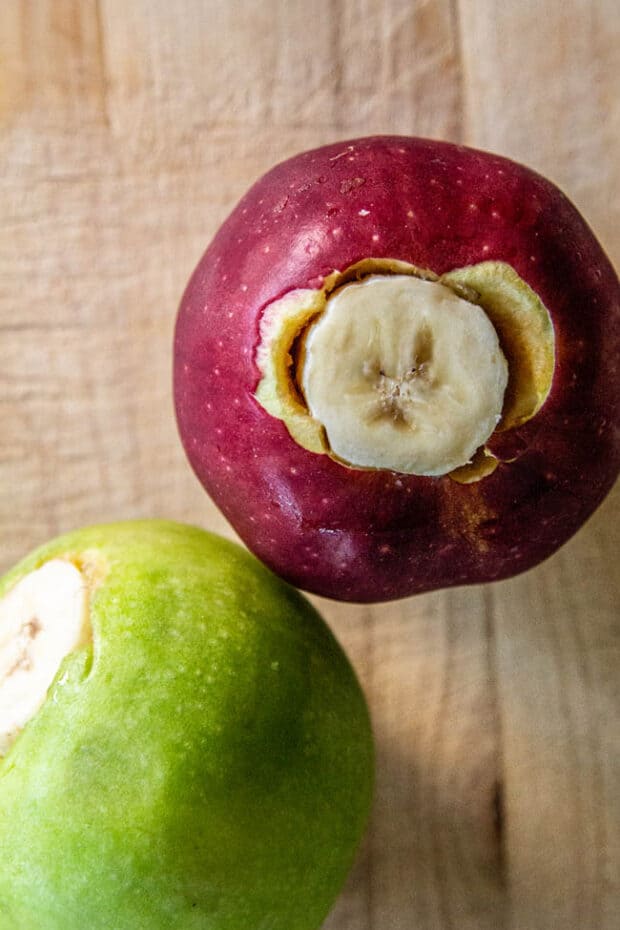
DIY Apple Kongs
Can Dogs Eat Apples? YES! This simple no-kook apple dog treat is served frozen to prolong chewing time and to provide an irresistible banana ice cream center.
Apples
I bet you didn't consider an apple a chew toy, but our dogs LOVE them! I make up big batches and keep them on hand in the freezer for whenever our dogs get bored and need a tasty chew
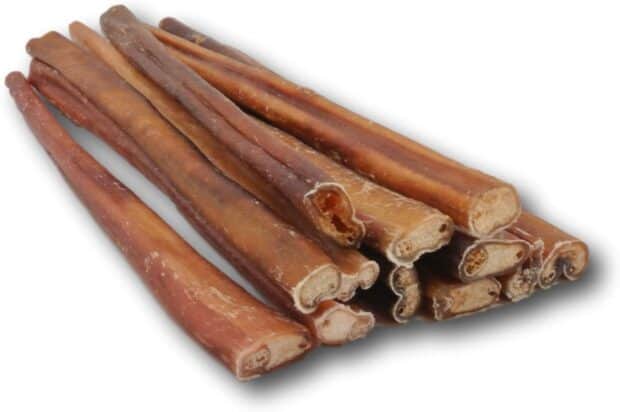
Bully Sticks
Can dogs eat bully sticks? YES!!!
Bully sticks are highly digestible, which means that they break down easily in your dog’s stomach. They don’t splinter like other treats, so you don’t have to worry about broken-off pieces causing any internal injuries. And they aid in plaque and tartar removal.
Bully sticks are a 1-ingredient treat made from high-protein beef muscle. Beef is a complete source of amino acids, which supports your dog’s muscles, brain, skin, and coat. Bully sticks are a great chew option, as they are free from artificial chemicals, additives, and preservatives.
While you should always maintain a teeth-brushing routine with your pup, you can use bully sticks as a way to help maintain clean teeth.
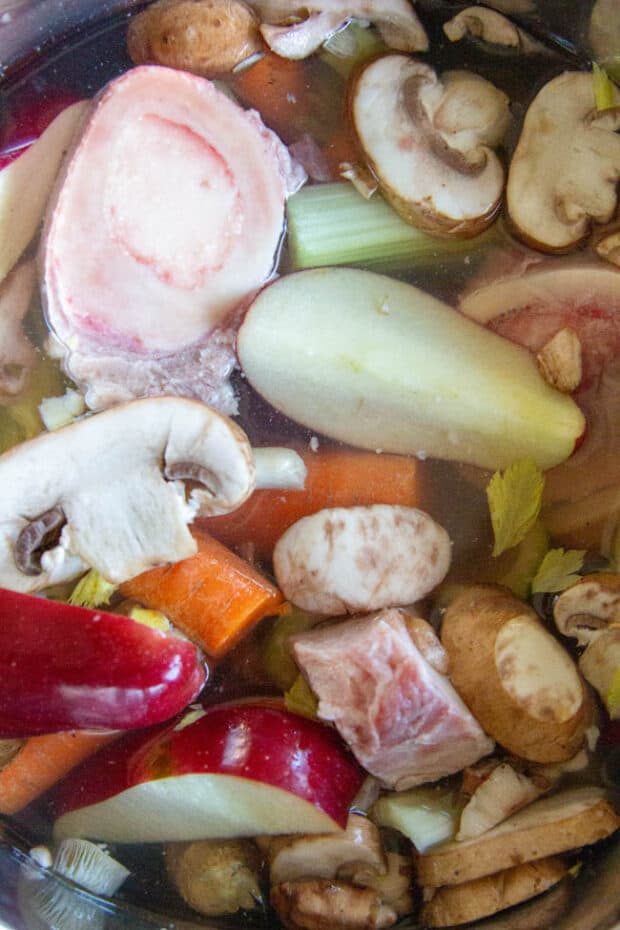
Bone Broth
Bone broth is safe for dogs! It can be a delightful and nutritious addition to your dog's regular meals. Although nutritional, it should not be the primary source of nutrition for a dog.
Bone broth contains a variety of nutrients that are good for dogs. It's high in protein, glycine, collagen, and glucosamine, as well as vitamins and minerals.
Glycine: This neutral amino acid is helpful in the kidneys of dogs suffering from ischemia-reperfusion (tissue damage caused when blood supply returns to tissue).
Collagen- A protein that has positive effects on mobility, skin, and coat, and digestion
Glucosamine- This nutrient can help lubricate your dog's joints and boost the making of core proteins, which can aid in the health and overall of joints.
Some of the best bone broths for dogs are:
Our dogs love our homemade bone broth recipe below, but they also really dig Native Pet's Beef Bone Broth Topper when I'm running low.
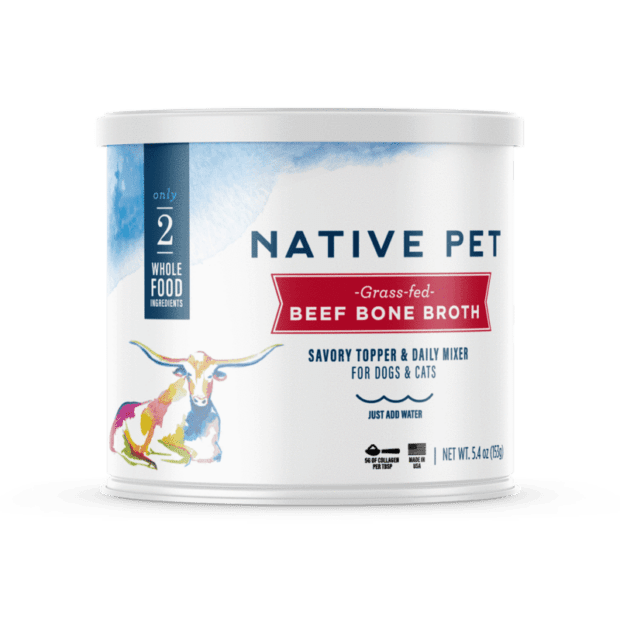
Beef Bone Broth Topper from The Native Pet
Native Pet's bone broth contains only natural ingredients and is sourced and packaged in the USA.
Our bone broth delivers on the nutritional benefits of a homemade broth in a convenient powder form and is used to re-hydrate dry food, or as a simple, nourishing drink.
Use code "THISMESSISOURS20" at checkout for 20% off your order!
How to use bone broth for dogs.
Bone broth can be used and fed in so many different ways. If your dog needs their food hydrated due to poor teeth or you are looking to add a protein boost to your pup's diet - bone broth is the way to go.
- You can freeze it into bone broth ice cubes for cold treats on hot days.
- When heated until just warm it can be served as a warm drink for your pup.
- Or you can pour it over your dog's dinner as a savory topper for homemade or dry food.
How much bone broth to feed at a time to your dog (or cat).
Dogs and cats under 20 pounds, serve them 1 oz of bone broth a day.
For dogs between 20-40 pounds, serve them 2 oz of bone broth a day.
Dogs between 50-80 pounds, feed them 4 oz of bone broth a day.
For dogs 80+ pounds, feed them 6 oz of bone broth a day
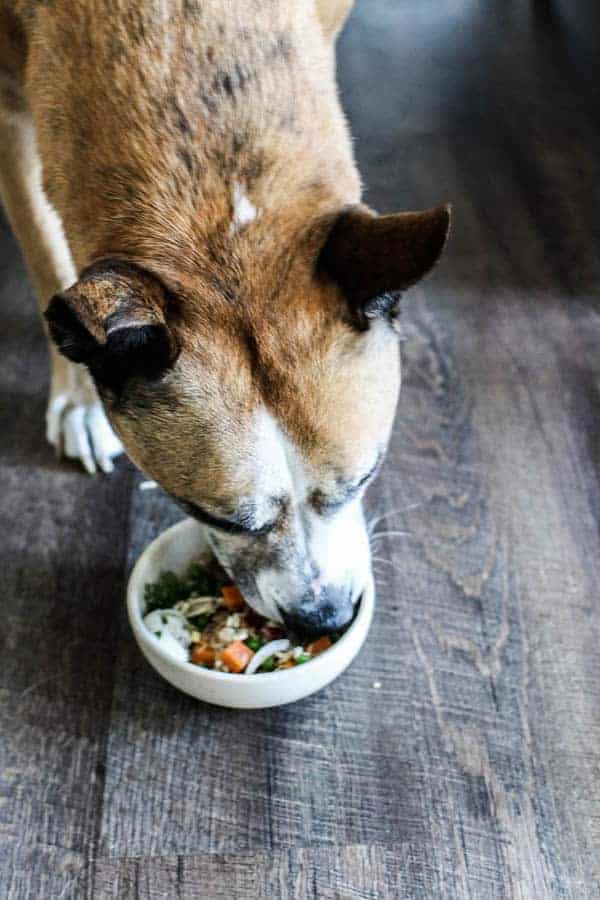
If you’ve made our bone broth for dogs recipe I would be so grateful if you would rate the recipe and let me know what you think in the comments below!
PrintBone Broth for Dogs
Bone broth recipes for dogs should be very different than those for humans! Dog's cannot eat certain ingredients that are typically used in bone broth for humans like onions.
This recipe is full of dog-friendly ingredients like apples, ginger, and mushrooms and can be made on the stove, in the Instant Pot, or slow cooker!
You can boost your dog's immune system, improve liver health, support healthy digestion, and help to relieve joint pain by adding homemade bone broth to your dog's daily meals.
- Prep Time: 10 minutes
- Cook Time: 4 hours or more depending on method
- Total Time: 0 hours
- Yield: varies
- Category: Dog food
- Method: Instant Pot
- Cuisine: Dog Food
- Diet: Gluten Free
Ingredients
2 tablespoons olive oil
3 inches unpeeled fresh ginger, sliced into coins
3 ½ pounds raw bones with marrow. I use oxtail. You could also use chicken, turkey, rabbit, beef, or pork bones that have marrow.
6 stalks celery, sliced
6 carrots, sliced
1 apple, cored and sliced
1 cup fresh flat-leaf parsley, roughly chopped
8 ounces sliced button or portabella mushrooms
2 quarts water
Instructions
Place all of the prepared ingredients into a large stockpot, slow cooker, or Instant Pot.
Instant Pot
Be sure the liquid and ingredients do not surpass the fill line in your particular model. If you have a small Instant Pot, you may have to cook the bone broth in two separate batches. Place the lid on and lock it into place. Flip the knob to "sealing" Cook on high pressure for 4 hours. Allow the pressure to release naturally before removing the lid.
Stovetop
Bring the ingredients to a boil then reduce the heat to a simmer. Simmer for 12 hours, stirring occasionally.
Slow Cooker
Place the lid on the slow cooker and set the heat to low. Cook undisturbed for 24 hours.
How to store bone broth for dogs:
Allow the bone broth to cool completely. Remove and discard the bones and any solid materials by placing a fine-mesh strainer over a large bowl or storage container and straining the broth through it. Discard the solids.
Place the strained broth in the refrigerator and allow the fat to rise to the top as it cools. The fat will turn white and more solid at the top once completely chilled. Skim off the fat and discard.
How to feed bone broth for dogs:
- You can freeze bone broth into ice cubes for cold treats on hot days.
- When heated until just warm it can be served as a warm drink for your pup.
- Or you can pour it over your dog's dinner as a savory topper for homemade or dry food.
How much bone broth to feed your dog:
Notes
Can dogs eat mushrooms?
While wild mushrooms can be toxic and even deadly, mushrooms sold in grocery stores are generally safe for dogs to eat.
Looking for homemade dog food recipes? We've got ya covered!
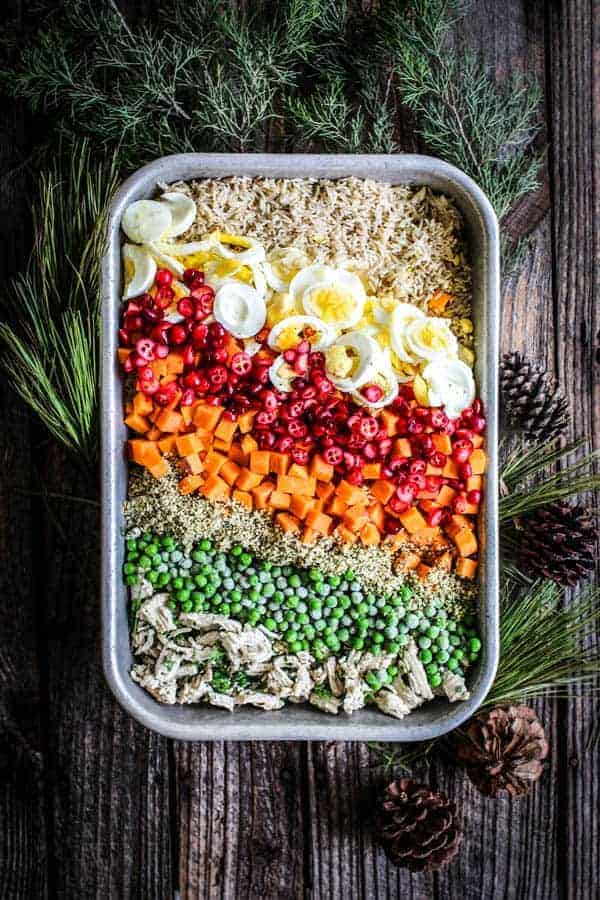
DIY Dog Food recipe with Turkey and Fall Vegetables
This 100% human-grade homemade dog food recipe utilizes some of the best fall produce for your dogs like sweet potatoes, cranberries, rosemary, and sage!
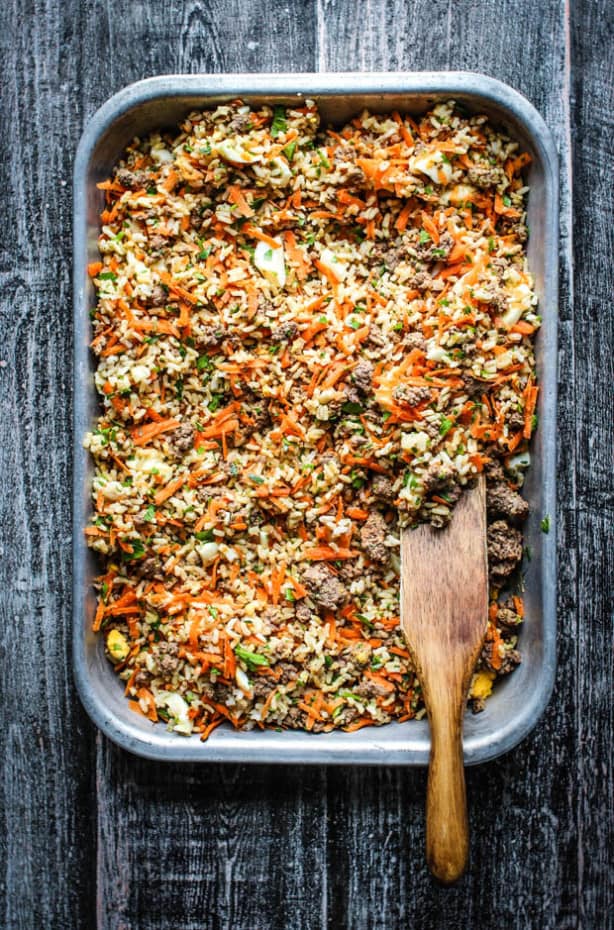
Basic Homemade Dog Food recipe
We created this low phosphorus recipe when our oldest dog was diagnosed with stage 4 kidney disease.
He was given only 3-6 months to live at the time and was placed on a costly kibble-based prescription kidney disease diet which he refused to eat.
All of the ingredients in this recipe are clean, wholesome, and easy for the kidneys to process.
I'm happy to report that on this diet and with the help of a few other life changes our dog went into full remission and now 2 years later has zero indicators of kidney disease at all.
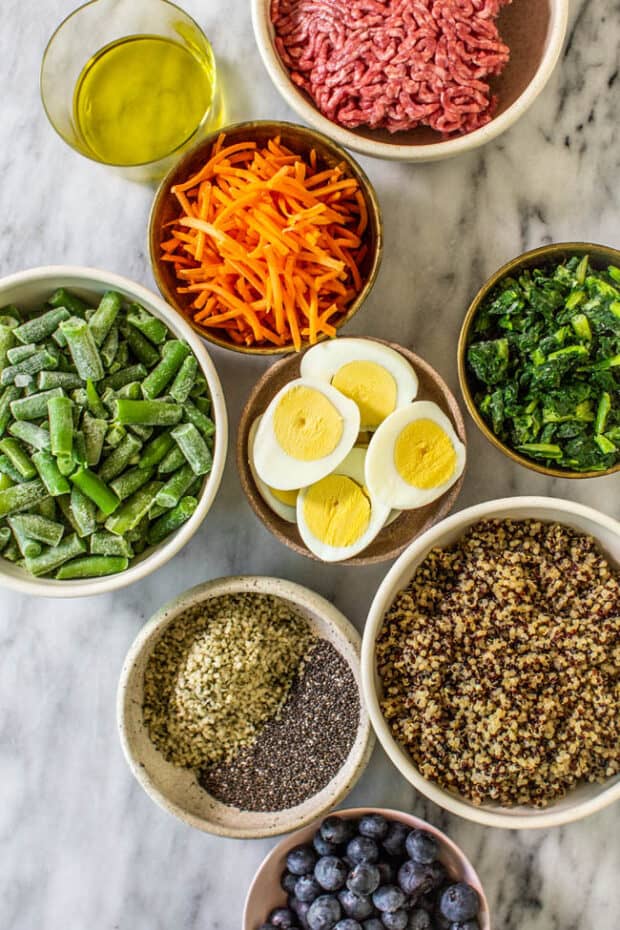
Anti-Inflammatory Homemade Dog Food recipe
The best anti-inflammatory diet for dogs is one that consists of high-quality proteins, good fats, vegetables that are high in fiber, and nutrients with low levels of sugar and carbohydrates. This vet-approved, homemade dog food recipe is full of inflammation-reducing ingredients that will nourish your dog from the inside out like quinoa, turnip greens, blueberries, and flaxseed.

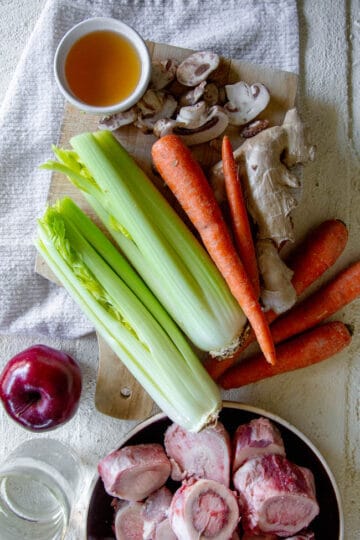
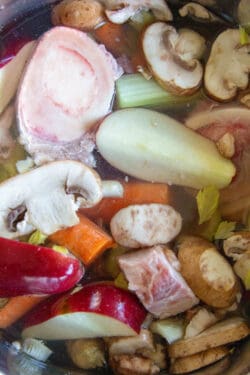
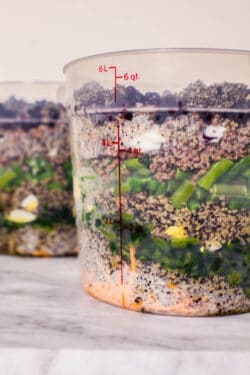
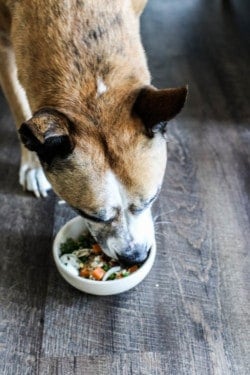
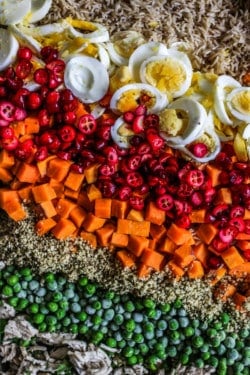
David B says
This was easy to make and so far my dog seems to like it. I have a question. The recipe calls for flat leaf parsley. However, in the herbs section you say to only use curly leaf parsley. Does the long simmer change the toxicity of the flat leaf parsley?
Eliza Clendenin says
Hi David! I'm glad to hear your dog is enjoying the bone broth! You’re absolutely right—there’s a bit of confusion with the parsley types mentioned. For this recipe, flat leaf parsley is actually a better choice, as it has a more robust flavor that can complement the broth well.
As for the toxicity, long-simmering doesn’t significantly change the properties of the parsley. However, it's worth noting that both flat-leaf and curly-leaf parsley contain compounds that can be harmful in large quantities. Since the amount used in the recipe is quite small, it should be safe for your dog, but always keep an eye out for any adverse reactions, especially if your pet is new to the broth.
Leslie says
Tips from an old lady: Bone broth is great for dogs (and humans!) but this recipe could use just a couple adjustments. For dogs and humans alike - first skip the olive oil, you get plenty of good fat from the bones. All seed oils are toxic, and they're rancid before they even hit the grocery shelves.
Finally, also skip the veg's, you don't need them. The minerals they might add are negligible and you're getting plenty of minerals from the bones. It's not worth the added glucose that you're ingesting from the carrots, or the negative effects that the celery has on the thyroid.
I just put all the bones in a Visions glass pot (or stainless steel if you must) and simmer
just below any actual water movement for 18-24+ hours. The broth is very flexible and accommodating to your schedule. Strain the bones, remove any marrow and add it back to the broth along with anything that's not hard stuff (it's all nutritious). Pour into Ball Mason jars. (Only Ball brand tests consistently negative for lead.) And don't disturb the fat that hardens on top, it preserves the broth for weeks in the fridge. Or freeze the broth to reduce the formation of extra histamines that increase over time if you or your dog are sensitive. Humans should eat this healthy fat, but dogs shouldn't get extra fat beyond what's already balanced in their (preferably) raw carnivore diet.
Hope my comment is welcome as constructive criticism and not removed. ❤️
Meg says
Thank you for this comment! I'm rebuilding my 9 y.o. Boxer's gut after 2 surgeries. We are 100% homemade raw and I've spent every day over the last 6.5 months learning, reading and researching how to get my boy back to stellar health. This information is so needed in our Raw Food world!